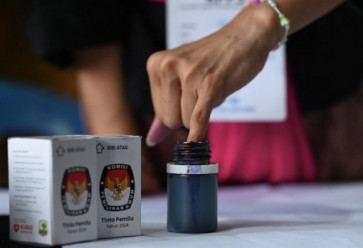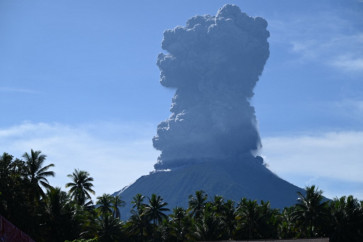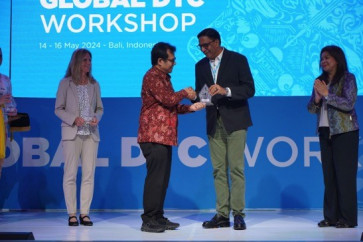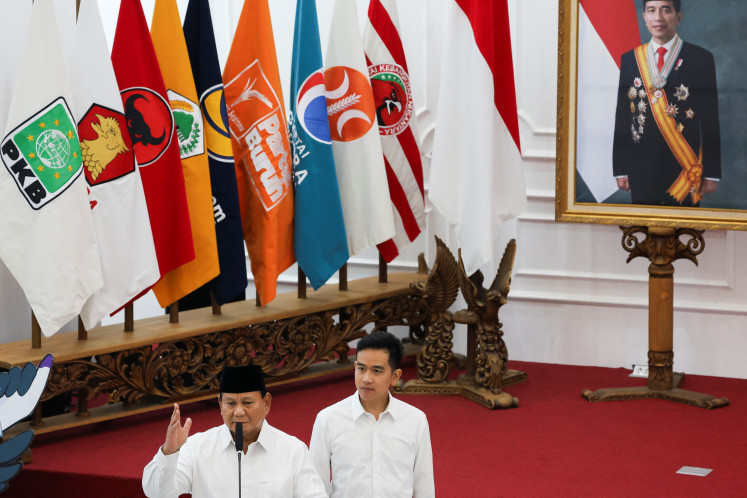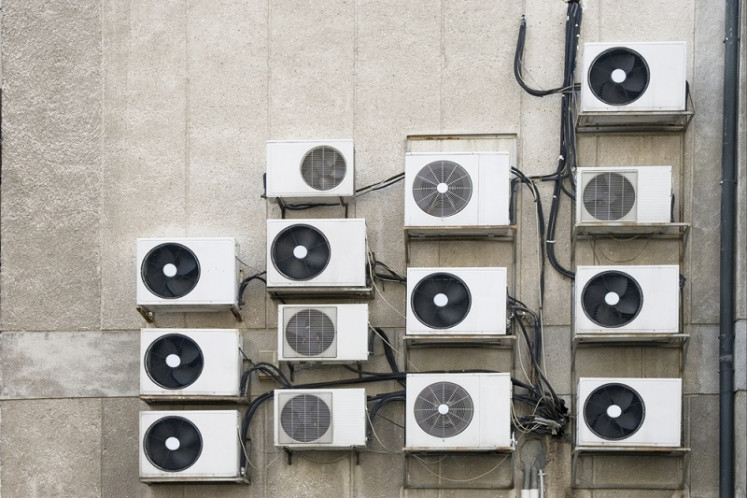'Visual Arts': Critique in the name of art
A collection of Visual Arts magazines are on display
Change Size

A collection of Visual Arts magazines are on display. The magazine celebrated its fifth anniversary on July 22 by holding a series of events, including a painting exhibition featuring the works of veteran artists at the National Gallery. (JP/J. Adiguna)
Amid the dynamic Indonesian visual arts scene, there is but one bimonthly magazine which has captures it successfully, quintessentially named Visual Arts.
Its sleek covers are always adorned with pictures of exquisite work and it is filled with writings on art composed by knowledgeable people.
The magazine serves as a bridge linking people in visual arts fields including artists, galleries, collectors, curators, academicians and the general public.
Publishing entrepreneurs Teguh Wibisana and Budi Santoso Prawira founded the magazine in 2004 to fill a void in publications on arts, said Visual Arts chief editor Yusuf Susilo Hartono. They also aimed to provide critique in an art scene where it was apparently lacking.
Before Visual Arts, there were virtually no commercial publications specializing in the visual arts, which resulted in a lack of critique in the field.
Now, aside from Visual Arts, there is also the English language art magazine C-Art (first published in 2007) and a local biweekly magazine called Arti which began in April this year.
With galleries flourishing, an abundance of exhibitions, busy auction houses and many young artists emerging, visual arts are currently entering exciting times in Indonesia.
The media outlets reporting on this phenomena are growing also, although at a much slower pace because of the size of the niche readership.
The Indonesian visual arts scene experienced its first boom in 1986, with the development of the banking system. At this time, people were already beginning to collect paintings as investments.
"But with the boom and up until early 2000 there were still no publications which covered the field seriously," Yusuf said.
"It was the market -- not the critics -- which would determine whether an exhibition was a success or not," Yusuf said.
And this was where Visual Arts found its niche, with a section dedicated to art critique to promote art values to readers.
"We wanted to try to revive art critique, even though it was very tough work," Yusuf said.
In June, the magazine celebrated its fourth birthday. The most pressing issue facing the magazine remained finding accomplished writers in the field.
"It is really difficult to find people who understand art and who can also write. Most experts in visual arts master the visual language, not the verbal," Yusuf said.
Celebrating their anniversary, the magazine is holding an art writing competition for university art students. Five winners will be trained to write for the Campus section of the magazine.
"This is part of our attempt at regeneration," Yusuf said.
"If we get even one talented writer, that would be something valuable."
Yusuf said many art critics have now become curators.
"Curators usually emphasize the positive aspects of exhibitions and hide the ugly sides, whereas critics try to see the whole thing," Yusuf said.
In its fourth year, the magazine has yet to make a profit.
"We still suffer losses," Yusuf said. With a circulation of 10,000, Visual Arts reportedly could only finance some 70 to 80 percent of its production costs, while the rest was still being covered by its owners.
Yusuf said, however, earnings from advertising have been on the increase and the magazine's distribution has broadened (now available in all parts of Indonesia except Papua).
With its anniversary, Visual Arts is also currently holding an exhibition called "E-motion", featuring established artists such as Daniel Kojo, Entang Wiharso, Hanafi, Tisna Sanjaya, Krisna Murti and Ay Tjoe Christine. The exhibition runs until Sunday, July 27, and is on at the National Gallery in Jakarta.
"We deliberately chose older artists over newer ones who are popular right now. We're not celebrating the (contemporary) trend. We want to remind people we have creative potential which has been tested, in terms of their experience, ideas and also their price," he said.

